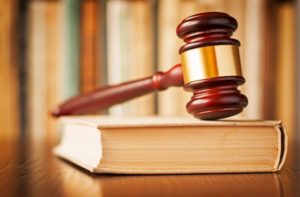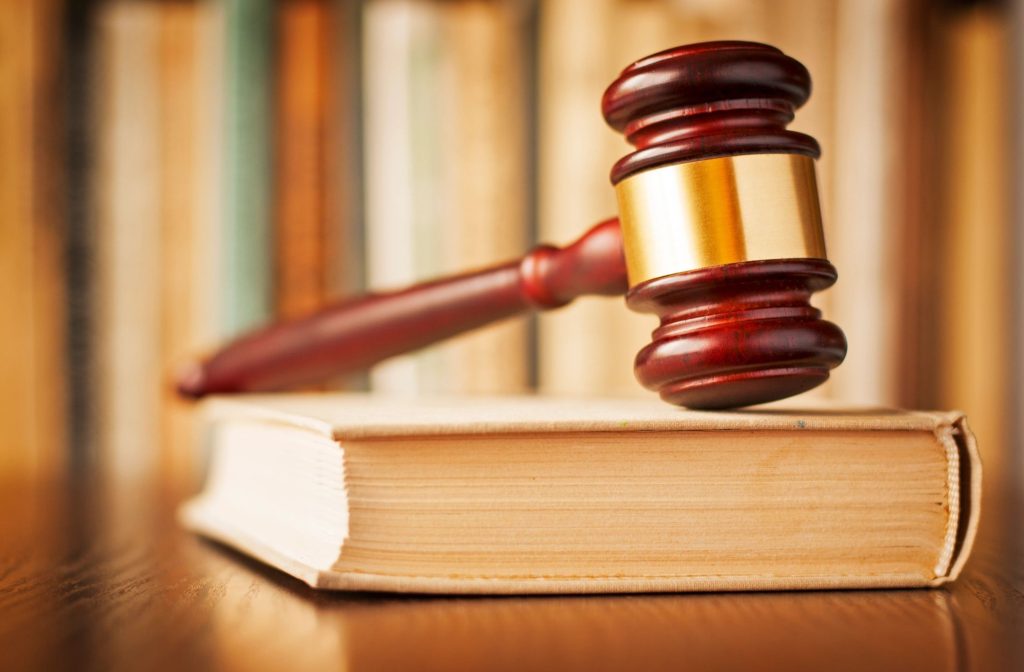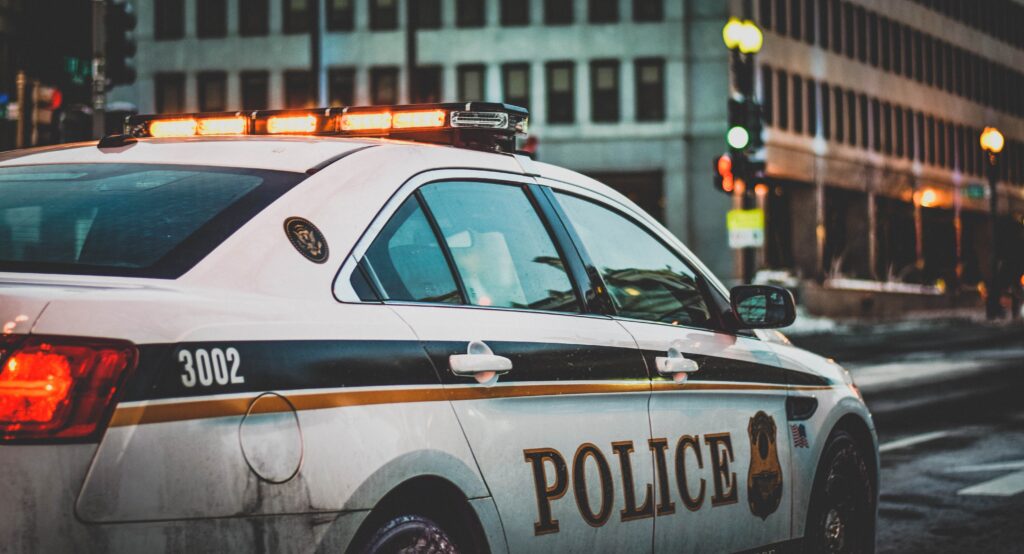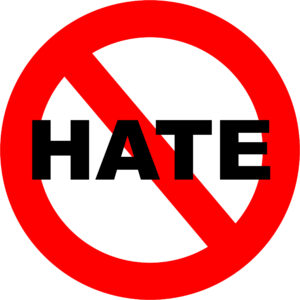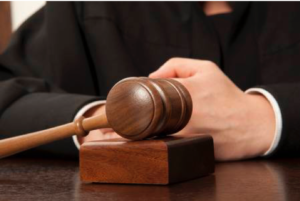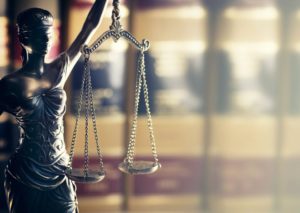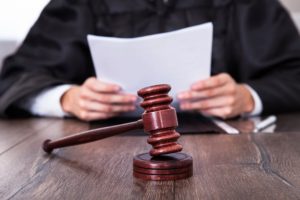
10 Wake Forest L. Rev. Online 124
Betsy J. Grey*
I. Introduction
Business owners and politicians have raised the specter of a flood of civil lawsuits arising out of the pandemic.[1] Most of these suits will likely be commercial in nature, and very few personal injury lawsuits have been filed against businesses since the pandemic began in the United States.[2] Even so, calls have come for immunity shields for industries that could potentially face personal injury lawsuits.[3] But are those requests for immunity well-founded? Strong hurdles to bringing personal injury suits already exist to discourage plaintiffs’ lawyers from suing.[4] The most significant roadblock is causal proof, which demands that plaintiffs prove both that the source of their infection was viral exposure at a defendant’s business and that the exposure was due to the defendant’s negligence.
In Covid-19 exposure cases, meeting the burden of proof on the element of causation will be insurmountable in most cases given the highly contagious nature of the virus, the multiple sources of exposure plaintiffs may experience, and the developing state of the art on effective mitigation measures to prevent viral spread. This Article explores these issues, examining the difficulty of causal proof in different business environments and comparing causal proof submitted in other tort cases involving clusters of injury, such as toxic exposure and food poisoning cases. It concludes by examining whether federal legislation enacting an alternative compensation scheme for claims brought by essential workers against businesses, with lower causal proof requirements, is a better way to address the problem of causal proof, at least for those workers.
Part II reviews the state of knowledge on how the virus is transmitted. Science continues to increase our knowledge on viral spread, but it is clear that significant spread comes from airborne particles, both smaller (aerosols) and larger (droplets).[5] It can also spread through a variety of surfaces, known as fomites, which may retain the virus for several days.[6] The virus spreads more easily indoors than outdoors.[7] Confined spaces seem to pose the highest risk.[8] Length of exposure is also a significant factor for contracting the virus.[9] Some spreaders are asymptomatic and expose others unknowingly.
In Covid-19 personal injury suits against businesses, plaintiffs would need to prove that they contracted the illness in a given setting and the contraction was due to the defendant’s negligent failure to implement appropriate mitigation measures.[10] Part III briefly overviews the primary mitigation measures that businesses currently use to reduce exposure to the virus. Many of these measures are based on federal and state governments’ guidelines to businesses.[11] These mitigation measures include ensuring social distancing, mandating mask usage, conducting symptom screening, upgrading ventilation systems, limiting numbers of patrons and employees on premises, undertaking deep cleaning measures, and providing hand-sanitizing dispensers.[12]
Part IV explores different types of business premises in which negligent exposure lawsuits can arise, and the challenges for proving causation in those settings. The strength of causal proof is a sliding scale, depending on factors such as the nature of the environment and the length of exposure. Causal proof will be stronger in contained environments with sustained close contact, like cruise ships and nursing homes, and weaker in highly public settings with short-term usage, like grocery stores. Contained environments also differ because some environments are completely contained, like prisons, while others are contained for periods of time, like meatpacking plants.
Part V examines other challenging exposure cases, like toxic torts and foodborne illnesses, to see how plaintiffs meet their burden on causal proof in those settings. These settings often involve identifying outbreaks and clusters of illness and applying probabilistic proof to show causation for specific individuals. Although important differences exist between those cases and the Covid-19 cases, they offer a starting point for approaching some of the complicated causal proof for Covid-19 cases.
Finally, Part VI explores the possibility of creating a federal alternative compensation fund for essential, frontline workers. Like other compensation funds, it would lower the burden on causal proof and create presumptions of exposure. The strong public policy reasons to support essential workers argue in favor of creating the causal presumptions and making it easier to receive compensation. One approach could include creating the equivalent of a federal workers’ compensation program for essential workers, applying presumptions that the virus was contracted in the course of employment. A workers’ compensation-like framework will help ensure that these essential workers are not left without recourse or compensation for their injuries.
II. Covid-19 Transmission
Covid-19 is highly contagious. It is a type of coronavirus similar to SARS-CoV (“SARS”) and MERS-CoV (“MERS”)[13] and can spread when an infected person coughs, sneezes, talks, or breathes, producing respiratory droplets and aerosols.[14] Bigger viral particles, called droplets, fall to the ground or nearby surfaces.[15] Smaller viral particles evaporate in the form of aerosols, and can linger in the air.[16] Experts estimate droplets and aerosols from a sneeze can travel up to six meters.[17] Droplets from an exhale or cough can travel between one and three meters respectively.[18] Aerosols, however, can potentially travel farther depending on the airflow pattern.[19] Covid-19 only remains viable in aerosols for three hours, but in the form of droplets, it can infect others for up to eighty-four hours.[20] Thus, while there is controversy among experts regarding the role of aerosols in spreading Covid-19, experts believe that the larger droplets predominantly spread the virus.[21]
Although Covid-19 can potentially spread through a variety of surfaces, experts believe fomites such as door and drawer handles, elevator buttons, and faucets are predominant carriers.[22] This potential is likely because Covid-19 can remain viable on plastic and stainless steel for up to seventy-two hours.[23] Other surfaces, such as cardboard, food, and water, however, have significantly lower viability spans, and thus are less likely to carry the virus.[24]
Coronaviruses are more likely to spread indoors. While there are still limited data on the effects of different environments on Covid-19 viability, studies show that SARS retains its viability best in temperatures ranging from 71 to 77 degrees Fahrenheit, and relative humidity of 40 to 50 percent, which is typical of air-conditioned environments.[25] However, the virus tends to lose viability at temperatures above 100 degrees Fahrenheit and relative humidity above 95 percent.[26] Given Covid-19’s similarities to SARS, this is likely the case for Covid-19 as well.[27] Notably, in a preprint Chinese study of 318 coronavirus outbreaks, all but one occurred indoors.[28]
Experts warn that even outdoor environments will not prevent infection among groups of people in close contact—the largest risk factor for spreading Covid-19.[29] The worst clusters of coronavirus in the U.S. have been tied to spaces with many people in close proximity at the same time.[30] The length of exposure is also a critical factor—sustained interactions carry a larger risk of infection than limited interactions.[31] Thus, the more people one interacts with, and the longer that interaction, the greater the risk of contracting Covid-19.[32]
Although there is a risk of contracting Covid-19 at nearly any location, confined spaces pose an elevated risk.[33] Some examples of high-risk confined spaces include flights, car rides, public transportation, homeless shelters, and healthcare centers.[34] One U.S. study analyzed Covid-19 infection potential in airplanes, cars, and healthcare centers.[35] In airplanes, the study reported that an infected person without a mask can infect between five to ten people through one cough.[36] This number decreases to approximately three people if the infected person wears a mask.[37] In a car, an infected person can potentially infect every person within the car through a cough, whether or not masks are worn.[38] While opening car windows and travelling at higher speeds slightly reduces the risk of transmission, Covid-19 droplets and aerosols can still infect every person in the car.[39] In healthcare centers (or any other indoor environment where people gather in clusters), an infected person’s cough can spread Covid-19 droplets up to one meter.[40] Thus, the infection risk from droplets is limited to those in close contact with the infected person, or who touch an infected fomite.[41] However, Covid-19 aerosols from the cough may follow the airflow stream of the air conditioning and potentially infect others several meters away.[42] While improved airflow and masks can decrease the risk of long-range transmission, some risk of infection remains.[43]
Once infected, the average person will show symptoms in five to six days.[44] However, it is possible to show symptoms up to fourteen days after exposure.[45] In a study of infected persons in the Hubei province of China, one of the original hotspots of the virus, 97.5 percent of people exhibited symptoms by 11.5 days.[46] Given that the time it takes a person to develop symptoms varies, it may be difficult to determine which point of exposure caused the infection. Equally challenging to tracing the source of infection is that some spreaders never develop symptoms at all.[47]
Our developing knowledge on viral spread and infection demonstrates how difficult it will be to prove that an individual contracted the virus at a specific exposure point.
III. Mitigation Measures for Businesses
For causal proof, plaintiffs must prove not only that the exposure to the virus occurred in the defendant’s premises; they must also prove that defendant’s failure to take appropriate mitigation measures—or a breach of its duty of due care—caused the contraction of the virus. In other words, plaintiff must show that defendant’s negligence caused the plaintiff to contract the virus. Most of the mitigation measures implemented by businesses originate from guidelines issued by the federal and state governments, but businesses are free to go beyond these measures in the interest of safety and the changing state of the art. Accordingly, an important dynamic in addressing the standard of care is what mitigation efforts others in the industry have implemented.[48] Custom in the industry will be a significant factor—if many others in the same industry have taken preventative steps that the defendant has not taken, this may suggest negligence.[49] The effectiveness of mitigation measures undoubtedly will be disputed by experts,[50] especially given the changing state of science and the lack of peer reviewed studies and literature in the area.
In general, businesses have a duty to promote the health of employees and patrons. The Centers for Disease Control and Prevention (“CDC”) has issued general guidelines for businesses to mitigate the spread of Covid-19 in the workplace.[51] Under these guidelines, businesses, first and foremost, should encourage those employees who are sick, have tested positive for Covid-19, or have recently come in close contact with a person who tested positive to stay home.[52] These guidelines direct businesses to conduct symptom checks for all employees, sending home those who do not pass.[53] If an employee tests positive for Covid-19, business owners should instruct them, as well as any potentially exposed employees, to stay home for fourteen days, telework if possible, and self-monitor for symptoms.[54] All areas used by the sick person should be closed off and disinfected after twenty-four hours.[55] The guidelines also encourage employers to promote workplace behaviors that reduce the spread of Covid-19.[56]
Businesses should implement practices to minimize close contact.[57] As noted, the more people with whom one interacts, and the longer that interaction, the higher the risk of Covid-19 spread.[58] Accordingly, the CDC recommends teleworking and non-contact services when possible.[59] In addition, businesses should modify the layout and procedures of their stores to ensure social distancing,[60] such as moving tables or barstools in restaurants,[61] spreading out gym equipment,[62] and establishing a clear path of travel for customers.[63] In spaces where it is hard to physically distance, businesses should install physical barriers and require employees to wear cloth face coverings to prevent the spread of infection.[64] The CDC recommends closing communal spaces, staggering employee shifts, and limiting the number of people allowed in the establishment.[65] Businesses should also post signs and messages in highly visible locations to remind employees and customers to socially distance.[66]
The guidelines recommend other strategies to maintain a healthy business environment, including regular cleaning of all surfaces,[67] increasing ventilation rates and controlling the temperature and humidity of their building,[68] and opening windows and doors to improve air circulation.[69] Because Covid-19 likely thrives best in low humidity, maintaining humidity levels of 40 to 60 percent may help prevent its spread.[70] Additional guidelines for restaurants include avoiding self-serve food and drink stations, and prioritizing outdoor seating. [71]
Under these guidelines, businesses should implement flexible leave policies that do not punish employees for taking time off when they are sick.[72] They should also offer high-risk employees, such as older adults and those with underlying medical conditions, alternative opportunities that limit their exposure risk.[73]
Importantly, the guidelines encourage businesses to follow all state and local Covid-19 regulations.[74] Some examples of common regulations include mask mandates, travel restrictions, mass gathering restrictions, and mandatory business closures.[75] Requirements may differ by state and industry; however, most regulations model the CDC guidance described above.[76] Currently, forty-one states require masks in public.[77] Most states have restricted mass gatherings in some capacity and restricted travel from certain hotspots.[78]
IV. A Sliding Scale of Causal Proof Factors
As the number of Covid-19 cases in the United States continues to rise, so does the potential for Covid-19 related personal injury lawsuits against businesses and employers. Employees, patrons, and patients could bring lawsuits against employers, businesses, and healthcare centers seeking compensation for personal injury damages resulting from their Covid-19 infection. Some of these lawsuits will be shielded by workers’ compensation and other strong immunities.[79] Even if they get beyond these shields, plaintiffs must prove that they more likely than not contracted the virus on the defendant’s premises due to the defendant’s negligence. Because the virus is highly contagious and can be contracted anywhere, proving causation in these cases will be extremely difficult. The strength of causal proof will reflect a sliding scale of factors like settings, mitigation efforts, and length of exposure.
Some settings will lend themselves to stronger causal proof than others. Given our knowledge about exposure, asymptomatic spreaders, and incubation periods, showing a temporal relationship between visiting the premises and the onset of the virus alone will not suffice. The best-case scenario for proving causation would likely involve an outbreak in a contained environment, like a cruise ship or nursing home.[80] Studies have shown that the likelihood of contracting Covid-19 in a confined space is higher than the likelihood of contracting it in other environments.[81] Moreover, a cluster of cases on the same cruise or nursing home will help prove that the outbreak is the most likely cause of the plaintiff contracting the disease. While an outbreak is not a requirement, it will bolster causal proof.[82]
In a recent district court case, plaintiffs sought damages for personal injury, including one death, from Covid-19, which they allegedly contracted while on a cruise due to the ship’s negligence in handling an outbreak of the virus.[83] The court dismissed the complaint, holding that although plaintiffs’ allegations of an outbreak on the ship and the defendant’s failure to quarantine or notify any of the passengers of the outbreak were sufficient to allege exposure, they had not sufficiently pled that they had contracted the virus from the exposure.[84] Significantly, though, the court granted plaintiffs leave to amend the complaint, to give them the opportunity to allege the amount of time between the exposure and the date the plaintiffs started experiencing Covid-19 symptoms or received a positive test.[85] The court explained that this timing regarding the incubation period is “a key fact necessary to render the causation allegations plausible, not merely possible.”[86] This suggests that allegations of an outbreak, negligent handling of the outbreak, extended exposure, and a temporal relationship between exposure and contract may be enough to get to a jury on causation.
Alternative causes will always be an area of dispute. While the plaintiff has to rule in the cause by a preponderance of the evidence and does not need to rule out alternative causes in her case in chief, the issue will inevitably arise.[87] Through investigation and discovery, defendants will attempt to develop potential sources of alternative exposures. Plaintiffs who have been taking public transportation, failing to wear a facemask, joining large gatherings, or not maintaining social distancing will have a harder time proving that they contracted the virus on the business premises. Alternative causes are harder to suggest in a nursing home where the plaintiff will likely have no other exposures other than the home itself, since most residents do not leave the building and outside visitors were curtailed very quickly after the pandemic started in March. A plaintiff who allegedly contracts Covid-19 on a cruise ship will also have fewer alternative scenarios to explain. Although proving the plaintiff contracted the virus on the cruise ship, and not one of the stops along the way, will still be at issue, a cluster of cases onboard, and a contained environment strengthens the causal proof.
Other potentially stronger causal cases include buildings where people gather in clusters for prolonged periods of time, such as homeless shelters, factories, or certain workplaces. These settings will not provide as strong a causal link as those that involve a nursing home or a cruise ship, since people who frequent those settings will be more mobile. Plaintiffs will likely need to present additional evidence, such as a Covid-19 outbreak in the facility, to strengthen their causal proof. Workplaces, like meatpacking plants, which cannot accommodate certain mitigation efforts such as social distancing may also prove to be stronger causal cases.
It will be especially difficult for plaintiffs to prove they contracted Covid-19 in uncontained environments, such as grocery stores, restaurants, gyms, and retail stores. Given that asymptomatic individuals spread many infections, it may be very difficult to identify precisely when the infection was contracted. Even if plaintiffs can prove they were socially isolated when they contracted the virus or that an outbreak occurred at that particular location, that proof may be insufficient. Defendants will challenge the plaintiff on other likely places of exposure, such as their home, car, or from any other person outside of the establishment.[88] Alternatively, the plaintiff could attempt to prove that the business was the epicenter of an outbreak. Contact tracing may reveal that a group of people visited a particular location within the same time period and later contracted Covid-19. But as Covid-19 cases in the United States continue to strain the healthcare system, state health departments struggle (or do not even try) to conduct effective contact tracing.[89] Thus, this option may not be viable.
Potentially, plaintiffs may also try to trace their Covid-19 case to a particular contact through DNA sequencing.[90] Scientists have used DNA sequencing to track the geographic spread of Covid-19.[91] This may allow identification of a particular strain of the virus on the business premises. This science is still developing, and it is unclear whether it can work with sufficient specificity to track a case to a single contact.
V. Causal Proof in Other Settings
Two other types of tort claims that often involve clusters of illnesses may provide useful precedent in proving causation in the Covid-19 context: food poisoning cases and toxic exposure cases. Both settings rely on circumstantial evidence and statistical proof to strengthen causal claims.
A. Food Poisoning
Food poisoning may have numerous potential sources of infection, which makes causal proof challenging. Because food poisoning spreads through contaminated foods,[92] a plaintiff may be exposed to multiple potential sources in every meal. Some kinds of food poisoning can take several days or even weeks to present.[93] In addition to creating uncertainty as to where an infection was contracted, this delay also minimizes a plaintiff’s ability to gather physical evidence because contaminated food may have been thrown away or unsanitary surfaces may have been sanitized. These challenges may explain the low rates of success food poisoning plaintiffs have had in suits.[94]
The success of a food poisoning claim is highly fact dependent. The cases where food poisoning plaintiffs have had the greatest success involve a large number of people developing the same symptoms and a quick investigation linking the contaminant in the plaintiff’s food to the contaminant found on the defendant’s premises.[95] Some bacteria that cause food poisoning have a unique “DNA fingerprint,” which have been used to track outbreaks and identify the source.[96] Even without scientific evidence directly linking the bacteria to the defendant, plaintiffs have successfully used circumstantial evidence to establish causation.[97] Food poisoning plaintiffs have relied on outbreaks and clusters to bolster their causal proof. For example, courts have considered whether others who consumed the food became ill and the time frame of the illness in relation to the consumption.[98] Although generally plaintiffs have not been required to rule out every conceivable source of causation,[99] courts have required them to do more than demonstrate they developed food poisoning shortly after eating the defendant’s food.[100]
The food poisoning cases indicate some of the challenges Covid-19 plaintiffs will face. As discussed earlier, Covid-19 plaintiffs likely face even more sources of infection because the virus can be spread through contact with an infected (and potentially asymptomatic) person or from infected surfaces.[101] Delays in the emergence of symptoms further increase the potential sources of infection.[102]
Although food poisoning and Covid-19 infections have substantial overlap, proving causation in a Covid-19 case may present additional challenges. While a food poisoning outbreak likely originates from a single (often static) source, the Covid-19 outbreak is so widespread that the potential sources are arguably any of the millions of infected individuals.[103] Importantly, food poisoning is not contagious, unlike the Covid-19 virus, which accounts for the continued increase in potential sources of the virus. In a food poisoning case, a plaintiff can use other people, such as family members, to demonstrate that they all became sick after eating at a restaurant. In a Covid-19 case, even if a family develops the disease after visiting a defendant’s premises together, the defendant may still be able to argue that one person contracted the disease somewhere else and spread it to the rest of the family. In limited circumstances, however, a Covid-19 plaintiff may actually have fewer potential sources of illness than the alleged food poisoning victim. For example, a plaintiff who quarantined or remained in a confined location will likely be able to demonstrate few alternative sources of exposure, whereas food poisoning plaintiffs are unlikely to have abstained from eating (i.e., other sources of exposure) during the potential exposure period. Even so, this may not remove the challenge of proving that it was the defendant’s negligence that caused the plaintiff’s harm.
B. Toxic Torts and Statistical Proof
In toxic tort, medical device, and drug cases, courts typically divide the causal inquiry into two questions: (1) general causation (whether the chemical, device or drug is capable of causing the injury); and (2) specific causation (whether the agent caused the injury to the individual plaintiff).[104] Although proof for both of those inquiries may be based on probabilities,[105] courts generally are more likely to allow probabilistic evidence through epidemiological studies to prove general causation but may not accept it to prove specific causation.[106]
With Covid-19 exposure cases, plaintiffs often will only be able to show that the defendant’s failure to take appropriate mitigation measures increased the likelihood that they were exposed to the virus (general causation) but not that the defendant’s negligence specifically caused them to contract the virus (specific causation). As discussed earlier, outside of a completely contained environment for a prolonged period, like a nursing home or cruise ship, the probability of a particular exposure and contraction will be lower. Plaintiffs will have difficulty showing that, absent the defendant’s conduct, they would not have contracted the virus when they did, which would fail to meet the traditional “but for” test for actual causation.[107] As science improves, through greater knowledge of Covid-19 and personalized medicine and advances in genetics, scientists may be able to designate which plaintiffs contracted the virus due to defendant’s activities, and which suffered injury due to other exposures. Science may one day permit us to distinguish where and when a plaintiff contracted the virus, but it is not yet at that point, and the best available evidence may be using probabilities and statistics to determine exposure in Covid-19 cases.[108] Much of the causal proof may rely on clusters of cases in a given environment, but in any specific case, an alternative cause may have been responsible for the plaintiff’s injury.
Since specific causation is inherently individual, defendants in Covid-19 cases will likely be successful in defeating claims of causation on a one-on-one basis. Courts and scholars have struggled with how to address situations in which some group of plaintiffs very likely have been injured by a defendant’s activity but cannot prove which individuals were harmed because of lack of specific causal proof. These population exposure cases often occur in mass torts such as toxic tort, medical device, and drug exposure cases.[109] Professor Levmore calls this problem “recurring misses,” which result in a defendant escaping liability even when it has clearly caused injury to someone.[110] Scholars have proposed “proportional liability” based on the probability of causation to address this problem.[111] This solution would adjust damages to the probability of causation, so that plaintiffs who can prove that there is, say, a 40 percent likelihood of injury due to the defendant’s activity should receive 40 percent of their damages from that defendant.[112] Other scholars reject this approach as allowing courts to impose liability without enough proof of responsibility. [113]
Courts have adopted this proportional liability approach in limited toxic tort cases, such as imposing market share liability.[114] Moreover, mass tort class actions settlements often appear to apply probabilistic causation in the settlement terms.[115] As Professor Lahav observes, “[a]s a practical matter, . . . mass torts are routinely resolved collectively through global settlements that provide more or less proportional recovery to plaintiffs.”[116] In other words, to address large scale injury from tortious behavior, litigants and courts may be adjusting traditional causal proof standards and turning to probabilities to achieve resolution of mass torts. If we view an extensive viral outbreak that is linked to a large-scale event sponsored without adequate mitigation measures—say a motorcycle rally or a campaign rally—as a mass tort, it may make sense to resolve causal proof problems through proportional recovery methods.
Courts sometimes lower traditional causal proof standards for policy reasons. Asbestos provides an interesting example.[117] Following prolonged exposure, asbestos-related diseases can take twenty to fifty years to develop.[118] Thus, it can be difficult to determine which asbestos exposure, if any, caused the disease, even though the defendant’s activities increased the likelihood of injury from asbestos exposure to a worker.[119] As a result, some states have lowered the causation standard for asbestos cases.[120] Without the lower causation standard, it would be nearly impossible for plaintiffs to recover.[121]
In asbestos cases, courts typically adopt one of two alternative causation standards to address the problem of causal uncertainty: the “substantial factor” test or the “frequency, regularity, proximity” test.[122] Under the substantial factor test, plaintiffs can prove causation by demonstrating that, to a reasonable medical probability, their exposure was a substantial factor in contributing to the aggregate dose of asbestos that led to the plaintiff’s disease.[123] The “frequency, regularity, proximity” test requires plaintiffs to identify a specific product as the probable cause of their injuries.[124] The substantial factor test, which courts apply when multiple defendants are responsible for an injury,[125] is less useful in the Covid-19 context since the virus is contracted through a single exposure. The “frequency, regularity, proximity” test, which requires plaintiffs to identify a specific product as the probable cause of their injuries, may be more useful. [126] Under the test, the plaintiff must have worked in close proximity to the product “on a regular basis over some extended period of time.”[127]
Under the “frequency, regularity, proximity” test, Covid-19 plaintiffs could attempt to show causation by presenting evidence of the length of time spent at the defendant’s place of employment or business, their proximity to others, and the property’s environment, along with evidence of cluster outbreaks on the same property. Applying the test would help overcome the almost insurmountable hurdle presented by the “but for” test in this context by allowing consideration of the probability of exposure to show specific causation.
In recent literature, scholars continue to argue that causal proof, in certain circumstances, should be attributed probabilistically[128] and on a collective basis.[129] Professor Campos challenges the need to prove individual causation in a mass production case, often a roadblock to class action certification, to ensure a greater impact on unlawful behavior.[130] As he states, after a finding of total liability, “one could relax specific causation requirements completely and simply choose a simple, rational way to distribute funds.”[131]
Professor Lahav argues that in an important subset of cases, where a binary determination of cause is virtually impossible but certain behavior has a tendency to cause harm, the causal question should be untied from a strictly scientific question of fact (the “but-for” inquiry), and introduce a normative element.[132] In these limited circumstances, she would apply a more value-laden test: “Should there be liability for this conduct?”[133] According to her, where courts must rely on probabilistic evidence for both general and specific causation, and repeated behavior has an increased likelihood of causing injury in the future, the causal inquiry should be influenced by the policy outcome the decision maker finds would be more beneficial to society and not just physical law.[134]
Applying Lahav’s and Campos’s approaches to the causal difficulty imposed by Covid-19 personal injury cases may make sense. Businesses face tremendous financial pressure to cut corners in safety measures in maintaining their workplaces and businesses during the pandemic, and those businesses may not be appropriately weighing the public health costs of their actions. This risk is compounded by the likelihood that businesses can defeat tort claims based on the failure of causal proof. Assuming that negligent behaviors by businesses and employers increase the likelihood of contraction of the virus, but that it is virtually impossible to prove with regard to individual cases, it is arguable that courts should be influenced by normative choices in determining liability. If hotspots, superspreader events, and clusters arise on certain premises, policy reasons may argue in favor of using statistical proof for both general and specific causation. This view of causation will have a greater impact on a potential defendant’s conduct and will create incentives to take appropriate safety measures to protect workers and consumers from contracting the virus.
Introducing normative considerations into the element of causation may also argue in favor of legislatively creating a special compensation fund with lowered causal proof requirements. Such a scheme may be particularly warranted for selected victims, like essential workers, as discussed below.
VI. Creating an Alternative Compensation Fund for Essential Workers
The difficulty of proving specific causation may be the undoing of most Covid-19 personal injury lawsuits against businesses. Driven by policy reasons in specific settings, legislatures have created alternative compensation systems that lower causal proof. Examples include compensating victims of vaccine injury to encourage use of vaccines while protecting vaccine manufacturers from personal injury lawsuits,[135] compensating veterans who may have been exposed to Agent Orange during the Vietnam War,[136] or compensating innocent victims, including clean-up workers, of the 9/11 attacks while protecting the airline industry from lawsuits.[137] Some state workers’ compensation systems have lowered the causal proof standard for showing that the disease or injury to the worker from Covid-19 resulted from an activity within the scope of employment.[138] These alternatives may serve as models for creating a federal compensation system and lowering causal proof for the essential, frontline workers who likely experienced increased exposure to the virus at their workplace. [139]
A. Federal Compensation Systems
Congress has formed at least three compensation systems that create a presumption of causation.[140] All of the settings involved challenging causation issues. In these schemes, causation is presumed when people develop specific injuries or illnesses after receiving certain vaccines, being exposed to Agent Orange, or being injured or killed in the 9/11 attacks or its aftermath.[141]
The Vaccine Injury Compensation Program[142] creates a no-fault compensation system for people injured by certain vaccines, especially childhood vaccines.[143] The program was created to encourage vaccinations and limit lawsuits that could hinder vaccine manufacturers or the supply of vaccines.[144] Individuals filing a claim must demonstrate they were injured by the vaccine.[145] Proving injury from a childhood vaccine can be quite difficult, but the Vaccine Injury Table[146] creates a presumption of causation for certain injuries.[147] To receive the presumption, an injured party only needs to demonstrate that he or she received a covered vaccine and experienced an illness, disability, injury, or condition listed in the table within a specific time period.[148] If an injury is not listed in the table, the injured party does not receive the presumption and must prove causation-in-fact.[149]
Federal legislation permits creation of a similar scheme for injuries from vaccines and other countermeasures used in a public health emergency. The Public Readiness and Emergency Preparedness Act (“PREP Act”) creates a compensation fund for individuals injured by countermeasures,[150] and the Secretary of Health and Human Services is authorized to create a list of injuries that will be presumed to be caused by a countermeasure.[151] In the Covid-19 context, countermeasures includes vaccines.[152] The policy behind creation of this fund is obvious: to encourage widespread use of vaccines and other countermeasures during a health emergency while protecting those who administer or create the countermeasures from liability.[153]
Veterans potentially exposed to Agent Orange during the Vietnam War also received a presumption of causation to receive compensation for certain diseases. Proving a causal link between exposure to the defoliant used during the war and subsequent delayed illness was extremely difficult, and the veterans of the controversial war were a sympathetic group of plaintiffs.[154] The Agent Orange Act of 1991[155] created a list of “presumptive diseases.”[156] In order to receive the presumption, a veteran must have developed a presumptive disease and have served in specific regions during certain time periods.[157]
Victims of the 9/11 terror attacks received compensation under the September 11th Victim Compensation Fund, which provides compensation to people substantially injured or to the families of people killed as a result of the terrorist attacks.[158] Although the Fund initially only covered those who were injured or killed in the immediate aftermath of the attacks, it was extended to cover clean-up workers whose manifestations of injuries may have been delayed.[159] To receive compensation, a claimant must demonstrate both a physical health condition and some exposure to the 9/11 crash site or clean-up efforts.[160] There is a list of approved “WTC-related health conditions;”[161] however, the exposure must be determined to be “substantially likely to be a significant factor” in the health condition by a medical professional.[162] This determination may be based on the length of exposure as well as the specifics of the exposure, such as actual involvement in clean-up efforts rather than only proximity.[163] A claimant must have been present at a crash site, within a Victim Compensation Fund (“VCF”) NYC Exposure Zone, or near debris removal routes.[164] Although it does not explicitly lower the burden of causation, the Fund’s list of qualifying health conditions and specific methods for determining exposure has a similar effect.
B. State Compensation Systems
States have lowered causal proof requirements in compensation systems. State workers’ compensation schemes generally require a worker to show that a disease or injury resulted from an activity within the course or scope of employment.[165] This showing could be very difficult for Covid-19 victims because of the many alternative sources of exposure, as discussed above. Some states, such as Alaska, Minnesota, and Wisconsin, have enacted legislation creating a presumption of causation that first responders contracted Covid-19 in the course of their employment.[166] In California, even non-essential workers receive the presumption. [167]
C. A Compensation Scheme for Essential Workers
The strong public policy interest in protecting essential workers from injury during the pandemic, and the difficulty of proving specific causation, argue in favor of creating a federal compensation fund for essential workers with a lower causal standard. Otherwise, given the barriers to proving causation (including under most state workers’ compensation schemes), few front line employees would be able to recover for their injuries from negligent defendants. These victims are serving in critical positions for society but face prolonged periods of exposure in risky environments. Similar to the 9/11 first responders, the symbolic nature of ensuring compensation for these victims is significant. The risks borne by these workers should be perceived of as commonly shared risks, which would justify the use of a federal compensation system. Modeled on state workers’ compensation programs, Congress could create a national program that creates a presumption of causation for essential workers who contract Covid-19, which would make them eligible for personal injury damages resulting from the virus. [168]
Compensation funds can ensure efficient dispensation of victim compensation. Any time a legislature goes outside the tort system and creates an alternative compensation system, however, it comes at a cost. In particular, it removes incentives provided by the tort system to engage in reasonably safe behavior.[169] One concern is that providing compensation to essential workers would create a disincentive to individuals from refraining from risky behaviors outside of work, like attending large public events or failing to socially distance. Although such behaviors will inevitably occur, on balance the arguments in favor of creating a compensation scheme for this limited group of workers who provide enormous benefit to society outweigh the risk of the workers engaging in risky behaviors outside of work. The anecdotal evidence of essential workers taking extreme measures to protect their families suggest that the risks of this behavior are minimal.[170]
Similarly, a federal compensation scheme may remove an incentive for businesses to take reasonable safety measures to protect their workers.[171] Like state workers’ compensation systems, the Fund would protect essential businesses from liability for claims brought by their employees, a form of tort immunity. Removing the specter of tort liability could create disincentives from prioritizing the implementation of sufficient safety measures, especially given the enormous financial pressures businesses face in the pandemic. Theoretically, regulators like the Occupational Safety and Health Administration (“OSHA”) fill in the gap left by no-fault workers’ compensation schemes.[172] Regulation of Covid-19 safety measures may need to be increased in this area to countermand the risk of unsafe business practices.[173] Even without increased regulation, the strong societal pressures to take appropriate mitigation measures, as well as the obvious need to create a healthy atmosphere for workers, should counteract the potential for reduced safety measures. Furthermore, the scheme would be limited in scope and only apply to workplaces of essential workers. Although a few states have already created presumptions to achieve the same result through state workers compensation funds,[174] most have not.
VII. Conclusion
Causation will be a significant barrier to personal injury lawsuits on business premises. There will likely be no direct evidence attributing contraction of Covid-19 to a specific source available in the near future. Although plaintiffs may be able to prove general causation by alleging that defendants’ negligent implementation of mitigation measures increased the likelihood of exposure to the virus generally, specific causation will be much more challenging. Alternative sources of exposure will always be an issue. The highly contagious nature of the virus and the lengthy incubation period make proof especially difficult. Plaintiffs’ conduct will play a central role in the causal proof.
This does not mean that the causal element must always be fatal to plaintiffs’ personal injury suits. Causal proof will be stronger when the premises involve contained environments over a lengthy period. Evidence of cluster “hot spots” will also strengthen the inference that the plaintiff contracted the virus on the premises. Plaintiffs may look to other precedent, such as food poisoning and toxic tort cases, where cases of clusters and statistical proof have been used, to bolster causation.
Finally, we should consider alternative methods of compensation for certain victims. In particular, essential frontline workers, serving in critical positions to promote social interests, but facing prolonged periods of exposure in risky environments, may warrant special protection. A federal compensation scheme would more equitably absorb the risk of no compensatory recourse due to failure of causal proof for these workers. Federal and state no-fault compensation schemes, which create presumptions of causation, offer models to create a special compensation fund for essential workers.
* Jack E. Brown Chair in Law, Sandra Day O’Connor College of Law at Arizona State University. I thank Brie Alford and Samantha Orwoll for their excellent research assistance for this Article.
[1]. Jim Tankersley & Charlie Savage, Businesses Seek Sweeping Shield from Pandemic Liability Before They Reopen, N.Y. Times (June 12, 2020), https://www.nytimes.com/2020/04/28/business/businesses-coronavirus-liability.html (quoting Senator Mitch McConnell who stated that businesses will be “set up for an avalanche of lawsuits” if Congress doesn’t act).
[2]. See Covid-19 Case Tracking Research, Perkins Coie LLP 1 (September 2020), https://www.perkinscoie.com/images/content/2/3/v24/234690/Perkins-Coie-Client-Advantage-COVID-Case-Tracking-Research.pdf. The largest number of suits filed this far have been against insurance companies for disputes over business interruption coverage. Id.; see also COVID-19 Complaint Tracker, Hunton Andrews Kurth, https://www.huntonak.com/en/covid-19-tracker.html (last visited Oct. 30, 2020) (tracking relatively few tort claims).
[3]. See Betsy J. Grey & Samantha Orwoll, Tort Immunity in the Pandemic, 96 Ind. L. J. Supp. 66, 66–67 (2020), http://ilj.law.indiana.edu/articles/Grey_Tort-Immunity-in-the-Pandemic_10.23.pdf.
[4]. See id. at 3–4.
[5]. Renyi Zhang et al., Identifying Airborne Transmission as the Dominant Route for the Spread of COVID-19, 117 Proc. Nat’l Acad. Sci. U.S. 14857, 14857 (2020), https://www.pnas.org/content/pnas/117/26/14857.full.pdf.
[6]. Mahesh Jayaweera et al., Transmission of COVID-19 Virus by Droplets and Aerosols: A Critical Review on the Unresolved Dichotomy, 188 Elsevier Env’t. Res. 1, 1 (2020).
[7]. Deciding to Go Out, Ctrs. for Disease Control & Prevention (Sept. 11, 2020), https://www.cdc.gov/coronavirus/2019-ncov/daily-life-coping/deciding-to-go-out.html.
[8]. Jayaweera et al., supra note 6, at 8.
[9]. Public Health Guidance for Community-Related Exposure, Ctrs. for Disease Control & Prevention (July 31, 2020), https://www.cdc.gov/coronavirus/2019-ncov/php/public-health-recommendations.html.
[10]. Order Granting Joint Stipulation to File Second Amended Compl. and Granting in part Def’s Mot. to Dismiss at 8, Wortman v. Princess Cruise Lines Ltd., No. 2:20-CV-041690DSF-JC (C.D. Cal. Aug. 21, 2020) (No. 30).
[11]. See, e.g., Interim Guidance for Businesses and Employers Responding to Coronavirus Disease 2019, Ctrs. for Disease Control & Prevention (May 6, 2020), https://www.cdc.gov/coronavirus/2019-ncov/community/guidance-business-response.html#:~:text=%2D%20Configure%20partitions%20as%20a,%2C%20pick%2Dup [hereinafter Interim Guidance].
[12]. See id.
[13]. Nicola Petrosillo et al., COVID-19, SARS and MERS: Are They Closely Related?, 26 Clinical Microbiology & Infection 729, 731–32 (2020).
[14]. Zhang et al., supra note 5, at 14,857.
[15]. Jayaweera et al., supra note 6, at 1.
[16]. Id.
[17]. Id. at 6.
[18]. Id.
[19]. Id. at 13–14.
[20]. Id. at 4.
[21]. Id. at 2.
[22]. Id. at 3.
[23]. Id. at 4.
[24]. William F. Marshall, Can COVID-19 (Coronavirus) Spread Through Food, Water, Surfaces and Pets?, Mayo Clinic (June 5, 2020), https://www.mayoclinic.org/diseases-conditions/coronavirus/expert-answers/can-coronavirus-spread-food-water/faq-20485479.
[25]. K.H. Chan et al., The Effects of Temperature and Relative Humidity on the Viability of the SARS Coronavirus, 2011 Advances Virology 1, 2 (2011).
[26]. Id. at 2–3.
[26]. Petrosillo et al., supra note 13, at 731–32.
[28]. Hua Qian et al., Indoor Transmission of SARS-CoV-2, medRxiv (forthcoming 2020) (preprint at 5) (on file with medRxiv and bioRxiv), https://www.medrxiv.org/content/10.1101/2020.04.04.20053058v1.
[29]. Aylin Woodward, You’re Less Likely to Catch the Coronavirus Outdoors, But the Amount of Time You Spend Near Other People Matters Most, Bus. Insider (May 17, 2020, 9:02 AM), https://www.businessinsider.com/risk-of-coronavirus-transmission-lower-outdoors-evidence-2020-5.
[30]. Id.
[31]. People with Certain Medical Conditions, Ctrs. for Disease Control & Prevention (Oct. 16, 2020), https://www.cdc.gov/coronavirus/2019-ncov/need-extra-precautions/people-with-medical-conditions.html. Patients with a higher viral load, or dose, of the virus may suffer from more severe symptoms of Covid-19. Elisabet Pujadas et al., SARS-CoV-2 Viral Load Predicts COVID-19 Mortality, 8 Correspondence e70, e70 (2020), https://www.thelancet.com/journals/lanres/article/PIIS2213-2600(20)30354-4/fulltext.
[32]. People with Certain Medical Conditions, supra note 31.
[33]. Jayaweera et al., supra note 6, at 8.
[34]. Id.
[35]. Id.
[36]. Id.
[37]. Id. at 9.
[38]. Id. at 12.
[39]. Id.
[40]. Id. at 13.
[41]. Id. at 13–14.
[42]. Id.
[43]. Id. at 14–15.
[44]. Stephen A. Lauer, et al., The Incubation Period of Coronavirus Disease 2019 (COVID-19) from Publicly Reported Confirmed Cases: Estimation and Application, Annals Internal Med. 1, 1, 3 (2020), https://www.ncbi.nlm.nih.gov/pmc/articles/PMC7081172/.
[45]. Id. at 4–5.
[46]. Id. at 3.
[47]. Seungjae Lee, et. al, Clinical Course and Molecular Viral Shedding Among Asymptomatic and Symptomatic Patients with SARS-CoV-2 Infection in a Community Treatment Center in the Republic of Korea, JAMA Internal Med. (Aug. 6, 2020), https://jamanetwork.com/journals/jamainternalmedicine/fullarticle/2769235.
[48]. Dan B. Dobbs, et al., Hornbook on Torts § 12.6 (2d ed. 2000).
[49]. Restatement (Third) of Torts: Liab. for Physical and Emotional Harm § 13 (Am. L. Inst. 2010).
[50]. See Danielle Conway-Jones, Factual Causation in Toxic Tort Litigation, 35 U. Rich. L. Rev. 875, 918 (2002) (“Because the issue of factual causation in toxic tort cases is complex, expert testimony is crucial, especially to those courts that rely heavily on the ontological approach.”).
[51]. Interim Guidance, supra note 11. For example, all businesses should designate a point of contact for Covid-related concerns. Id.
[52]. Id.
[53]. Id.
[54]. Id.
[55]. Id.
[56]. Id. Examples include teaching employees proper etiquette for coughing, sneezing, and handwashing, and providing tissues, no-touch trashcans, soap and water, and hand sanitizer with at least 60 percent alcohol. Id. Restaurant and bar owners should monitor employee compliance with hand-washing protocol. Considerations for Restaurants and Bars, Ctrs. for Disease Control & Prevention (June 30, 2020), https://www.cdc.gov/coronavirus/2019-ncov/community/organizations/business-employers/bars-restaurants.html [hereinafter Considerations for Restaurants and Bars].
[57]. Interim Guidance, supra note 11.
[58]. Operating Schools During COVID-19: CDC’s Considerations, Ctrs. for Disease Control & Prevention (May 19, 2020), https://www.cdc.gov/coronavirus/2019-ncov/community/schools-childcare/schools.html.
[59]. Considerations for Restaurants and Bars, supra note 56.
[60]. Interim Guidance, supra note 11.
[61]. Considerations for Restaurants and Bars, supra note 56.
[62]. Personal and Social Activities, Ctrs. for Disease Control & Prevention (Sept. 11, 2020), https://www.cdc.gov/coronavirus/2019-ncov/daily-life-coping/personal-social-activities.html#gyms.
[63]. Interim Guidance, supra note 11.
[64]. Id.
[65]. Id.
[66]. Id.
[67]. Id. Soap and water is sufficient for most surfaces; however, frequently touched surfaces, such as light switches, doorknobs, and handles, should be disinfected. Reopening Guidance for Cleaning and Disinfecting Public Spaces, Workplaces, Businesses, Schools, and Homes, Ctrs. for Disease Control & Prevention (May 7, 2020), https://www.cdc.gov/coronavirus/2019-ncov/community/reopen-guidance.html [hereinafter Reopening Guidance]. Businesses should consult CDC guidelines to ensure they use the correct cleaner or disinfectant for the particular surface. Id. To reduce the cleaning burden, businesses may consider removing unnecessary items and replacing hard to clean surfaces, such as carpets and rugs. Id.
[68]. Businesses should run their ventilation 24/7 if possible, to increase ventilation rates. Interim Guidance, supra note 11. The American Society of Heating, Refrigeration, and air-Conditioning Engineers (“ASHRAE”) recommends single-space high ventilation to reduce concentrations of infectious aerosols. See Erica J. Stewart et al., ASHRAE Position on Infectious Aerosols, ASHRAE (Apr. 14, 2020), https://www.ashrae.org/file%20library/about/position%20documents/pd_infectiousaerosols_2020.pdf.
[69]. Interim Guidance, supra note 11.
[70]. See Stewart et al., supra note 68.
[71]. Considerations for Restaurants and Bars, supra note 56.
[72]. Id.
[73]. Id.
[74]. Interim Guidance, supra note 11.
[75]. COVID-19 State and Local Policy Dashboard, Multistate, https://www.multistate.us/research/covid/public (last visited Oct. 30, 2020).
[76]. See id.
[77]. Id.
[78]. Id.
[79]. See Pa. Exec. Order No. 2020-05 (2020), https://www.governor.pa.gov/wp-content/uploads/2020/05/20200506-GOV-health-care-professionals-protection-order-COVID-19.pdf. Notably, this legislation only protects individuals and not the healthcare entities. See Grey & Orwoll, supra note 3, at 69–75.
[80]. See Benedict Carey & James Glanz, Aboard the Diamond Princess, a Case Study in Aerosol Transmission, N.Y. Times (July 30, 2020), https://www.nytimes.com/2020/07/30/health/diamond-princess-coronavirus-aerosol.html?referringSource=articleShare (discussing evidence that small, airborne droplets may play a large role in the transmission of Covid-19 and may have “accounted for about 60 percent of new infections over all” on a cruise ship).
[81]. Jayaweera et al., supra note 6, at 8.
[82]. See Foster v. AFC Enters., 896 So. 2d 293, 297 (La. Ct. App. 2005) (finding that evidence of a cluster of food poisoning cases was not necessary to prove causation). But cf. Hairston v. Burger King Corp., 764 So. 2d 176, 178 (La. Ct. App. 2000) (noting that clusters of food poisoning cases help establish causation).
[83]. Order Granting Joint Stipulation to File Second Amended Compl. and Granting in part Def’s Mot. to Dismiss at 6–8, Wortman v. Princess Cruise Lines Ltd., No. 2:20-CV-041690DSF-JC (C.D. Cal. Aug. 21, 2020) (No. 30) (allegations of Covid-19 outbreak on cruise ship, without quarantining passengers, sufficiently allege plaintiffs were exposed to virus while onboard; complaint dismissed with leave to amend to allege amount of time between alleged exposure and experiencing symptoms or receiving positive test to allege causation).
[84]. Id.
[85]. Id. at 7–8, 12.
[86]. Id. at 7.
[87]. See Restatement (Third) of Torts: Liab. for Physical and Emotional Harm § 28, cmt. b (Am. L. Inst. 2010) (“The civil burden of proof merely requires a preponderance of the evidence, and the existence of other, plausible causal sets that cannot be ruled out does not, by itself, preclude the plaintiff from satisfying the burden of proof on causation.”).
[88]. Plaintiffs may have expressly or impliedly assumed the risk of contracting Covid-19 in a particular location. Assumption of the risk may act as a complete bar to recovery. Plaintiffs may have expressly assumed the risk if they signed a waiver releasing a business or organization from liability for contracting Covid-19 in their establishment. Alternatively, a plaintiff who knowingly and voluntarily patronized a business that was not exercising appropriate precautions may have impliedly accepted the risk of contracting Covid-19.
[89]. Tracking Coronavirus Cases Proves Difficult Amid New Surge, Mod. Healthcare (June 29, 2020, 1:19 PM), https://www.modernhealthcare.com/technology/tracking-coronavirus-cases-proves-difficult-amid-new-surge.
[90]. Claire Jarvis, How Genomic Epidemiology is Tracking the Spread of COVID-19 Locally and Globally, Chem. & Eng’g News (Apr. 23, 2020), https://cen.acs.org/biological-chemistry/genomics/genomic-epidemiology-tracking-spread-COVID/98/i17.
[91]. Id.
[92]. Abigail Shew, Are You Sure It Wasn’t Food Poisoning, U.S. Dep’t Agric. (May 7, 2019), https://www.usda.gov/media/blog/2017/08/28/are-you-sure-it-wasnt-food-poisoning.
[93]. See, e.g., Listeria (Listeriosis), Ctrs. for Disease Control & Prevention (June 17, 2019), https://www.cdc.gov/listeria/symptoms.html; Salmonella and Food, Ctrs. for Disease Control & Prevention (July 9, 2020), https://www.cdc.gov/foodsafety/communication/salmonella-food.html.
[94]. One study found that only one third of plaintiffs receive compensation in foodborne illness cases tried before a jury. Jean C. Buzby et al., U.S. Food & Drug Admin., Product Liability and Microbial Foodborne Illness, Agricultural Economics Reports No. 799, 25 (2001), https://www.ers.usda.gov/webdocs/publications/41289/19022_aer799f.pdf?v=0. The USDA has identified additional challenges facing food poisoning plaintiffs. Id. at 24.
[95]. Louis R. Frumer, Products Liability § 48.06 Medico-Legal Aspects of Food Poisoning (2020), LEXIS.
[96]. Pulsed-field Gel Electrophoresis (PFGE), Ctrs. for Disease Control & Prevention (Feb. 16, 2016), https://www.cdc.gov/pulsenet/pathogens/pfge.html. Whether a similar tool will be developed for Covid-19 remains to be seen, although it would be unlikely to help those already infected.
[97]. See, e.g., Craten v. Foster Poultry Farms Inc., 305 F. Supp. 3d 1051, 1061 (D. Ariz. 2018) (finding “sufficient circumstantial evidence to permit a jury to reasonably infer that [the plaintiff] more likely than not contracted his infection from raw chicken associated with the outbreak”).
[98]. See, e.g., Patterson v. Kevon, LLC., 818 S.E.2d 575, 579 (Ga. 2018) (“[The plaintiff showed that a] large number of persons who ate the food prepared by [the defendant] became ill; that some of those who became ill did not consume leftovers or other food at the rehearsal dinner or wedding; and that most fell ill within the same time frame as the [plaintiffs].”); Lohse v. Coffey, 32 A.2d 258, 260 (D.C. 1943) (affirming a jury verdict when the plaintiff “proved that another person who consumed the same foods at the same time (though with a different beverage) also became ill”).
[99]. See, e.g., Greenup v. Roosevelt, 267 So. 3d 138, 142 (La. Ct. App. 2019) (“[Plaintiff] need not negate every conceivable cause.”); Gardyjan v. Tatone, 528 P.2d 1332, 1334 (Or. 1974) (“The fact that there was another possible cause of the plaintiff’s illness is not fatal to his case.”).
[100]. See, e.g., China Doll Restaurants, Inc. v. MacDonald, 180 A.2d 503, 505 (D.C. 1962) (holding that a plaintiff who became ill shortly after eating at a restaurant, but whose only causal evidence was her own testimony the food did not taste good, did not establish causation); Landry v. Joey’s Inc., 261 So. 3d 112, 118–20 (La. Ct. App. 2018) (finding an “absence of evidence presented demonstrating any positive causal connection” when the plaintiff had demonstrated that she developed food poisoning after allegedly eating one of the defendant’s sandwiches).
[101]. How COVID-19 Spreads, Ctrs. for Disease Control & Prevention Control (Oct. 5, 2020), https://www.cdc.gov/coronavirus/2019-ncov/prevent-getting-sick/how-covid-spreads.html.
[102]. Current science indicates that Covid-19 symptoms may manifest between two and fourteen days after exposure. Symptoms of Coronavirus, Ctrs. for Disease Control & Prevention (May 13, 2020), https://www.cdc.gov/coronavirus/2019-ncov/symptoms-testing/symptoms.html.
[103]. As of October 13, 2020, the CDC reported over 7.7 million cases of Covid-19. CDC COVID Data Tracker, Ctrs. for Disease Control & Prevention (Oct. 13, 2020), https://www.cdc.gov/coronavirus/2019-ncov/cases-updates/cases-in-us.html.
[104]. Sergio J. Campos, The Commonality of Causation, 46 Ohio N. U. L. Rev. 229, 253 (2020); Alexandra D. Lahav, Chancy Causation in Tort 14 (May 15, 2020) (unpublished manuscript), https://ssrn.com/abstract=3633923.
[105]. Campos, supra note 104, at 253.
[106]. Lahav, supra note 104, at 17.
[107]. Restatement (Third) of Torts: Liab. for Physical & Emotional Harm § 26 (Am. L. Inst. 2010) (“Conduct is a factual cause of harm when the harm would not have occurred absent the conduct.”).
[108]. Even the causal link between an individual’s contraction of lung cancer and smoking remains probabilistic. Lahav, supra note 104, at 9.
[109]. Id. at 14.
[110]. Saul Levmore, Probabilistic Recoveries, Restitution, and Recurring Wrongs, 19 J. Legal Stud. 691, 692 (1990).
[111]. David Rosenberg, The Causal Connection in Mass Exposure Cases: A “Public Law Vision” of the Tort System, 97 Harv. L. Rev. 851, 859 (1984).
[112]. Id. See generally Levmore, supra note 110, at 719; Steven Shavell, An Analysis of Causation and the Scope of Liability in the Law of Torts, 9 J. Legal Stud. 463 (1980) (discussing the role of probability in apportioning tort liability).
[113]. Michael Moore, Causation and Responsibility: An Essay in Law, Morals and Metaphysics 4–5 (2009); Jane Stapleton, Two Causal Fictions at the Heart of U.S. Asbestos Doctrine, 122 L.Q. Rev. 189, 192 (2006).
[114]. Courts developed market share liability under the cases brought against DES manufacturers. DES, a drug administered during pregnancy, caused injury to the offspring after a long latency period. The plaintiffs often were unable to identify which manufacturer’s drug their mother had ingested. Courts developed the market share liability concept to address the causal proof problem, under which liability was assigned to a defendant based on its share of the DES market. See Sindell v. Abbott Labs., 607 P.2d 924, 937–38 (Cal. 1980); Hymowitz v. Eli Lilly & Co., 539 N.E.2d 1069, 1078 (N.Y. 1989).
[115]. See In re NFL Players Concussion Injury Litig., 821 F.3d 410, 439, 448 (3d Cir. 2016) (approving class certification and settlement); Lahav, supra note 104, at 19–21.
[116]. Lahav, supra note 104, at 20.
[117]. Asbestos is a mineral often used in building materials, vehicle brakes and clutches, and tile. Asbestos, U.S. Dep’t Labor (July 31, 2020), https://www.osha.gov/SLTC/asbestos/. Consistent exposure can lead to a myriad of diseases including lung cancer, asbestosis, colon cancer, and mesothelioma. Id. Factory workers, construction workers, and automotive mechanics are among those at risk given their constant exposure. Id.
[118]. Karen Selby, Mesothelioma Statistics, Mesothelioma Ctr. (Aug. 19, 2020), https://www.asbestos.com/mesothelioma/statistics/.
[119]. William L. Anderson & Kieran Tuckley, How Much is Enough? A Judicial Roadmap to Low Dose Causation Testimony in Asbestos and Tort Litigation, 42 Am. J. Trial Advoc. 39, 48–49 (2018) (“There . . . appears to be no way at present to trace any specific fibers in the lung back to an actual source of exposure.”); Myra Paiewonksy Mulcahy, Note, Proving Causation in Toxic Torts Litigation, 11 Hofstra L. Rev. 1299, 1301–02 (1983).
[120]. See Holcomb v. Georgia Pac., LLC, 289 P.3d 188, 195–96 (Nev. 2012).
[121]. See Brian M. DiMasi, Comment, The Threshold Level of Proof of Asbestos Causation: The “Frequency, Regularity and Proximity Test” and a Modified Summers v. Tice Theory of Burden-Shifting, 24 Cap. U. L. Rev. 735, 738–41 (1995) (“The many types of asbestos products, the many possible places of exposure, the lack of direct evidence of particular product exposure, and the possibility of contributing factors have forced the courts to develop various standards of causation that are either separate from the two traditional tests or are variations of the same.”)
[122]. See Holcomb, 289 P.3d at 193–95.
[123]. Id. at 193–94.
[124]. Id. at 195.
[125]. Id. at 194.
[126]. Id. at 195.
[127]. Id.
[128]. Lahav, supra note 104, at 1, 14.
[129]. Campos, supra note 104, at 234 (arguing that the relevant inquiry is whether the defendant’s conduct caused the population harm as a whole in unlawful “mass production” cases).
[130]. Id.
[131]. Id. at 264. He noted that statistical proof supporting general causation was admitted to prove specific causation in the pesticide Roundup MDL. Id. at 259–60.
[132]. Lahav, supra note 104 (arguing that “the but-for test should be jettisoned” in tort cases where causation is based on probabilities).
[133]. Id. at 21.
[134]. Id. at 23.
[135]. U.S.C. §§ 300aa-14–34.
[136]. Agent Orange Act of 1991, 38 U.S.C.§ 101.
[137]. Victim Comp. Fund, September 11th Victim Compensation Fund 4 (2020), https://www.vcf.gov/sites/vcf/files/media/document/2020-03/VCF_Overview.pdf.
[138]. See Grey & Orwoll, supra note 3, at 77–78.
[139]. See, e.g., Ariz. Exec. Order No. 2020-12 (Mar. 23, 2020), https://azgovernor.gov/executive-orders (deeming grocery stores, media, hardware stores, educational institutions, laundry services, restaurants, day care centers, hotels, and other businesses to be essential businesses); Vt. Exec. Order. No 01-20 add. 6 (Mar. 24, 2020), https://governor.vermont.gov/sites/scott/files/documents/ADDENDUM%206%20TO%20EXECUTIVE%20ORDER%2001-20.pdf (deeming businesses engaged in health care operations, law enforcement and public safety, critical infrastructure and manufacturing, retail services for human needs, fuel products, transportation, trash collection, agriculture, mail, banking, and other services as “critical to public health and safety”).
[140]. See infra notes 135–37 and accompanying text.
[141]. See infra notes 135–37 and accompanying text.
[142]. 42 U.S.C. §§ 300aa-14–34.
[143]. National Vaccine Injury Compensation Program, Health Res. & Servs. Admin. (Jan. 2020), https://www.hrsa.gov/vaccine-compensation/index.html.
[144]. See id.
[145]. 42 U.S.C. § 300aa-11(c).
[146]. 42 U.S.C. § 300aa-14.
[147]. National Vaccine Injury Compensation Program: Revisions to the Vaccine Injury Table, 82 Fed. Reg. 6,294, 6,295 (Jan. 19, 2017) (to be codified at 42 C.F.R. 100).
[148]. Id.
[149]. Id.
[150]. 42 U.S.C. § 247d-6e. For claims for injuries that may be caused by coronavirus vaccines, compensation will be distributed under the Countermeasures Injury Compensation Program, which is part of the PREP Act. Declaration Under the Public Readiness and Emergency Preparedness Act for Medical Countermeasures Against COVID-19, 85 Fed. Reg. 15198 et seq. (March 17, 2020), amending 42 C.F.R. § 110.100.
[151]. 42 U.S.C. § 247d-6e(b)(5).
[152]. In the context of Covid-19, countermeasures can include antivirals, drugs, biologics, diagnostics, devices, or vaccines. Declaration Under the Public Readiness and Emergency Preparedness Act for Medical Countermeasures Against COVID-19, 85 Fed. Reg. at 15,202.
[153]. See Kevin J. Hickey, Cong. Rsch. Serv., LSB10443, The PREP Act and COVID-19: Limiting Liability for Medical Countermeasures 1 (2020) (“[The PREP Act serves to] encourage the expeditious development and deployment of medical countermeasures during a public health emergency.”).
[154]. See Ralph Blumenthal, How Judge Helped Shape Agent Orange Pact, N.Y. Times (May 11, 1984), https://www.nytimes.com/1984/05/11/nyregion/how-judge-helped-shape-agent-orange-pact.html (describing the judge’s warnings “that the veterans’ case had big problems” but that “a Brooklyn jury [would] be sympathetic to the veterans”).
[155]. Agent Orange Act of 1991, 38 U.S.C.§ 101.
[156]. 38 U.S.C. 1116(a)(2); see also Agent Orange Exposure and VA Disability Compensation, U.S. Dep’t. Veterans Affs. (Sept. 18, 2020), https://www.va.gov/disability/eligibility/hazardous-materials-exposure/agent-orange/related-diseases/.
[157]. 38 U.S.C. 1116(a)(1). The VA states that the presumption applies to veterans who served in Vietnam between January 9, 1962 and May 7, 1975 or in the Korean Demilitarized Zone between September 1, 1967 and August 31, 1971. Agent Orange Exposure and VA Disability Compensation, supra note 156.
[158]. Victim Comp. Fund, supra note 137, at 1, 4.
[159]. James Zadroga 9/11 Health and Compensation Act of 2010, Pub. L. No. 111-347, 124 Stat. 3623 (2011); Never Forget the Heroes: James Zadroga, Ray Pfeifer, and Luis Alvarez Permanent Authorization of the September 11th Victim Compensation Fund Act, Pub. L. No. 116-34, 133 Stat. 1040 (2019).
[160]. Victim Comp. Fund, supra note 137, at 7.
[161]. 42 U.S.C. § 300mm-22(a).
[162]. Id.
[163]. Scott D. Szymendera, Cong. Rsch. Serv., R45969, The September 11th Victim Compensation Fund (VCF) 3 (2019).
[164]. Victim Comp. Fund, supra note 137, at 7.
[165]. Jim Pocius, Workers Compensation and Course of Employment, Int’l Risk Mgmt. Inst., Inc. (Feb. 2001), https://www.irmi.com/articles/expert-commentary/workers-compensation-and-course-of-employment.
[166]. See S.B. 241, 31st Leg., 2d Reg. Sess. (Alaska 2020); H.F. 4537, 91st Leg., Reg. Sess. (Minn. 2020); Wis. Stat. § 102.03(6) (2020).
[167]. Cal. Exec. Order N-62-20 (May 6, 2020), https://www.gov.ca.gov/wp-content/uploads/2020/05/5.6.20-EO-N-62-20-text.pdf. Governor Newsom’s executive order created a rebuttable presumption that an employee who tests positive for Covid-19 within fourteen days of working at the employee’s place of employment caught the disease in the course of employment. This presumption is “disputable” and does not apply if the employee’s place of employment is his own residence. Id.
[168]. See Jon L. Gelman, Lessons from Asbestos Litigation Apply to Covid Claims 1, 8 (Aug. 4, 2020) (unpublished manuscript), https://papers.ssrn.com/sol3/papers.cfm?abstract_id=3659568 (calling for creation of federal fund to indemnify employers and workers’ compensation insurance companies for Covid-19 claims to maintain solvency).
[169]. See Elizabeth Chambee Burch, Mass Tort Deals: Backroom Bargaining in Multidistrict Litigation 32 (2019) (The values that accompany civil litigation include “deterrence, compensation, information production, victim empowerment, public participation in democratic trials, and equity before the law.”).
[170]. Emma Grey Ellis, How Health Care Workers Avoid Bringing Covid-19 Home, WIRED (Apr. 4, 2020, 8:00 AM), https://www.wired.com/story/coronavirus-covid-19-health-care-workers-families/ (describing how some healthcare workers “have moved into hotel rooms or sleep in their cars,” work “24-hour shifts to reduce the number of times they move between the hospital and home,” or “sent their children and families to stay with friends or grandparents rather than risk exposing them to the virus”).
[171]. See generally Andrew F. Popper, In Defense of Deterrence, 75 Alb. L. Rev. 181 (2012) (discussing the role of deterrence in tort law and tort reform).
[172]. See Jason R. Bent, An Incentive-Based Approach to Regulating Workplace Chemicals, 73 Ohio St. L.J. 1389, 1394–95 (2012) (“[T]he current workers’ compensation and OSHA systems are inadequate to correct the market[’s] failure[]” to take proper precautions.).
[173]. Why is OSHA AWOL?, N.Y. Times (June 21, 2020), https://www.nytimes.com/2020/06/21/opinion/coronavirus-osha-work-safety.html (“[T]he federal agency meant to protect America’s workers continues to sit on the sidelines.”).
[174]. See supra note 166.






